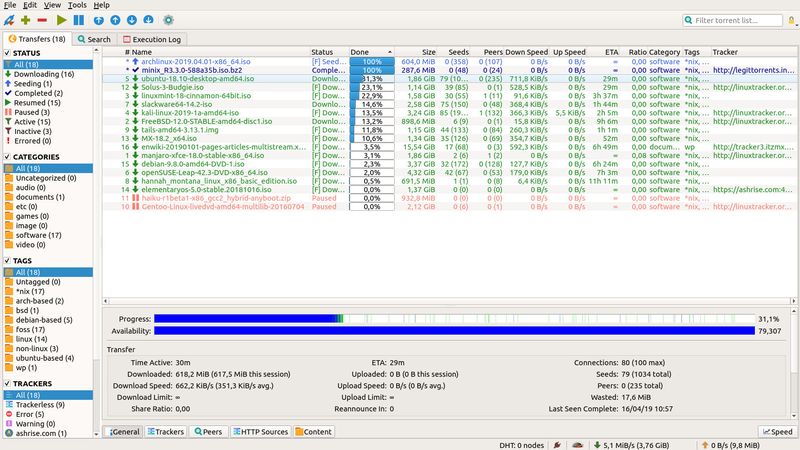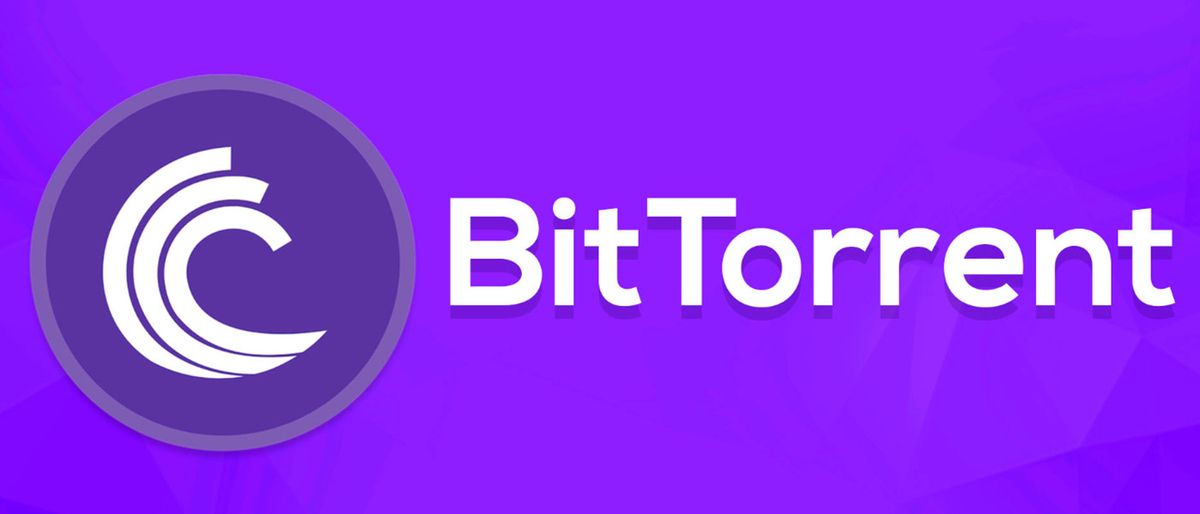BitTorrent is a peer-to-peer (P2P) file-sharing system, one of the most popular content distribution methods on the Internet, although in recent years it has lost users to alternatives such as streaming. Although it is also used in other applications such as VoIP communications, the distribution of large files is its main purpose as a very useful alternative to the server-based distribution system.
Torrent is the file format in which information about the content shared in the BitTorrent protocol is stored, as we said, surely the most popular one available today, although there are others such as eDonkey or eMule. Since pioneers like Napster, these methods of sharing content have been criminalized by the industry and made synonymous with piracy, but we must insist that they are as legal as any other.
Their use is as legal as any other application, but sharing copyrighted files on their networks is as illegal and punishable by law as doing so by other means. Often, some ISPs have blocked and restricted the use of P2P services on their networks. A strategy is equally or more reprehensible as pirate file sharing. Don’t consent to it, denounce it, or change provider. Some industry-connected copyright organizations have hired third-party companies to disseminate false, incomplete and even malware to disrupt their operation. Beware.
There is no concrete data on BitTorrent usage, but there are tens of millions of users who use it daily and many more if we add up all peer-to-peer networks, although, as we said, the total has fallen after the rise of streaming services. If you are interested in approaching this method of file distribution, we suggest you read this Torrent Guide, its fundamentals, terminology, and the best client applications to use.
What is a Torrent?
It is a type of file with a .torrent extension that stores the data necessary for a BitTorrent application to share the content. Its size is very small (between 10 and 200 KB) because it does not include the content itself but information about the files and folders in it, including the location of the different “chunks” of the target file into which it will be divided, first into pieces and then into blocks.
Other essential information contained in a torrent file is encrypted hash values that are used to verify each chunk of the target file. They also include the URLs of many trackers and other additional metadata defined by BitTorrent.
How does BitTorrent work?
The BitTorrent network is often defined as a swarm of bees because its operation is similar. Thus, instead of downloading a file from a single server, the protocol allows you to join a swarm where thousands of users simultaneously download and upload pieces of a file until its content is complete.
At the user level, its operation is very simple. Let’s take as an example a provider such as Canonical that intends to distribute one of its GNU/Linux distributions via BitTorrent. The company creates a .torrent file and advertises it on its website, by email, or by other means. The user downloads the file and runs it in a BitTorrent application that will handle its management, downloading, and sharing among multiple users until the download of an Ubuntu. ISO image is completed on their computers.
Under this system, Canonical saves a great amount of infrastructure in dedicated servers for direct download avoiding collapses. In a very short time, the Ubuntu image (remember that it was “sliced” in BitTorrent) will have been sufficiently spread among thousands of users and they will be the ones who will contribute to its distribution at the same time they download it. If users are sufficiently “honest” (as we will see later) the download speed of a massive torrent file will not envy that obtained by a direct download.

BitTorrent Terminology
There are several terms that a user approaching this file-sharing system should know. Some of them we have referred to above and they are:
- Swarn (Swarm): It includes all the structures and users of the network, with design and operation similar to a swarm of bees, hence its name.
- Tracker: The special server identifies the swarm and helps the client to share parts of a file with other computers and users.
- Peers (Points): All users who are currently connected to the network.
- Seeds or Seeders (Seeds): Refers to the users who own the complete file. Essential for effective distribution.
- Leechers: These are users who are downloading parts of a file and have not yet completed it. It is also used to refer to “suckers”, those who once they manage to complete the file do not continue sharing it.
Best BitTorrent clients and programs
These are the applications that allow the interpretation of the data of the .torrent files, connect them with the users, manage the upload and download speeds, perform multiple downloads and finally, check and mount the files and folders once the download of the pieces of the file has been completed.
Their basic operation is similar in all of them although they vary in their interface and some additional options. The market presents a good offer for all major operating systems, including free and/or open-source clients such as:
qBittorrent. Free, adware-free, and open source based on libtorrent, it is available for Windows, OS X, Linux, and others. It offers essential features such as web-based remote control, torrent prioritization, IP filtering, selective file downloading, and even torrent creation. Lightweight and fast, for some (myself included) it is the best for Windows.
Deluge. An open-source and cross-platform application that uses libtorrent as a backend with versions for Windows, OS X, and Linux. Free and ad-free, it is recommended for all types of users because under a simple appearance, it offers powerful features for advanced users who want to experiment by installing add-ons.
Vuze (former Azureus). Its main advantage is its interface. Unlike other BitTorrent clients that lump all their settings together, the Vuze interface is surprisingly easy to understand, even the text in the application seems written for beginners. It also includes a built-in search function and supports numerous add-ons for additional functionality. It has both free and paid versions. The free version (simply called Vuze) may include ads, but they are not intrusive.
Transmission-Qt Win. For some the best BitTorrent client for OS X and Linux. It does not have a native Windows application, but there is an unofficial application.
uTorrent. Wonderful client, super lightweight and full of features… in the past. It was bought by BitTorrent, Inc. and the fun just stopped. Full of crapware (even malware in ads) and with serious bugs. It has been improved in the last versions, but millions of users who used it have discarded it.
There are others, like BitComet or Tixati, but the ones above are the ones we like the most.
How to set up BitTorrent clients and use them to be generous?
For a user, it is just a matter of downloading the client and installing it on your computer although it is advisable to be careful in the choice because as we have warned some include adware. It is also necessary to make a good review of the application settings. As with any P2P file-sharing network, it is a moral and practical obligation to be as “generous” as possible in the upload capacity we offer to other users.
Ideally, we would like to get close to a 1:1 download/upload ratio, but this is almost impossible because most users do not have symmetrical Internet access services. As a general rule, set the upload capacity to the maximum that your connection allows without penalizing the performance of your computer or others connected to the network. And continue to share the most requested files even if you have downloaded them in order to contribute to their distribution.

Where to find torrent files? Check torrent sites
These are the websites that advertise .torrent files. They always publish links to them but not their content. They may (or may not) include search engines for their location as clients (applications) do not usually include it and some also function as a tracker.
Torrent sites have been criminalized and legally persecuted since their inception accused of being the source of piracy, with the example of The Pirate Bay and many others. Certainly, all these sites offer a multitude of pirated files but their “illegality” is not clear as they only include links, in the same way, that Google or other search engines do. Moreover, the original torrents are neither created nor shared by these sites, nor do they appear for the first time on these sites because the content is already widely distributed on other private channels when it arrives on the BitTorrent network.
What is IPFS, is it the future of P2P file sharing?
The BitTorrent protocol has a decentralized nature, but the ecosystem surrounding it has some weaknesses. Torrent sites, for example, use centralized search engines that are prone to outages and crashes. Initiatives like Torrent-Paradise, an index of .torrent files built on a copy of The Pirate Bay database, solve this problem with IPFS, a searchable torrent indexer that is shared by the users themselves.
IPFS, short for InterPlanetary File System, has been around for a few years and although it is unknown to most Internet users, it has a growing base of users, especially among advanced users. IPFS is a decentralized network where users make files available to each other. If a website uses IPFS, it is served by a “swarm” of people, just as BitTorrent users do when sharing a file.
The advantage of this system is that websites can be completely decentralized. If a website or other resource is hosted with IPFS, it remains accessible as long as the computer of a user who “pinned” it remains online, allowing archivists, content creators, researchers, and many others to distribute large volumes of data across the Internet. It is resistant to censorship and is not vulnerable to the usual hosting outages.
It’s not all advantages. One of the main obstacles is that IPFS must be installed and configured if you want to become a node. This is a relatively straightforward process, but the average web user may not be familiar with using a command line to configure it, which is a requirement.
However, there are also IPFS gateways available. Cloudflare, for example, recently introduced one. This allows anyone to access sites such as Torrent-Paradise via a custom URL, although these do not help with site sharing. Another drawback is that the static index on which the site is based is only updated once a day. This is not a technical restriction, but rather a practical one. In theory, it could be updated almost in real-time.
Torrent-Paradise is at the moment a fairly basic site, but the real goal is to showcase its use. “Decentralized torrent searching is next”, they describe this site which aims to be a showcase of the decentralized file-sharing networks of the future.





